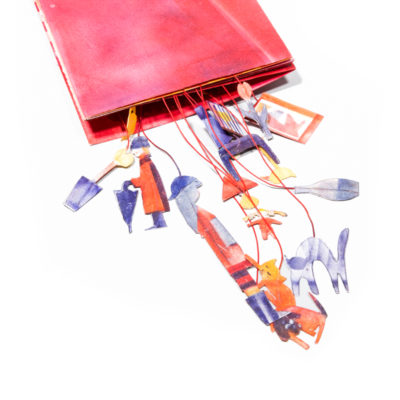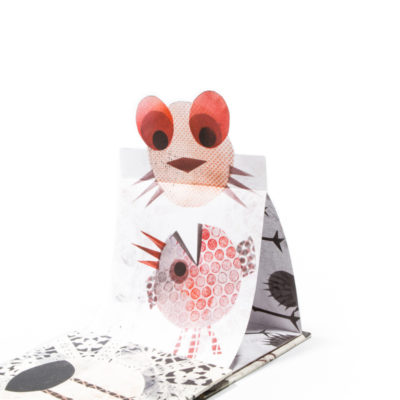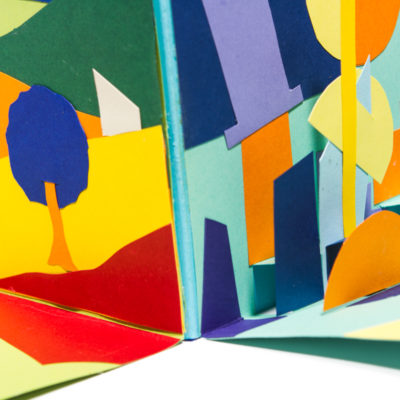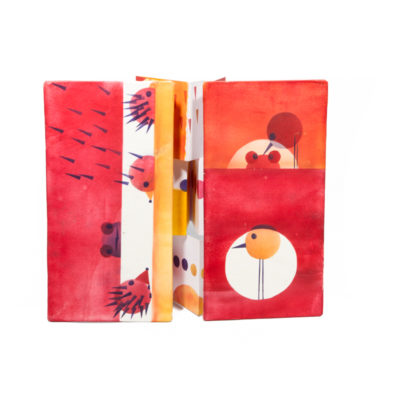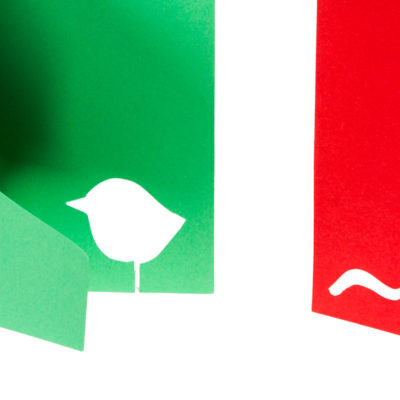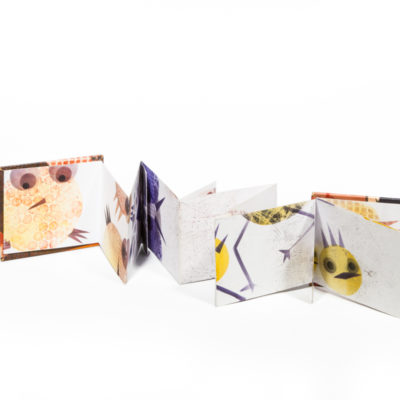The world of illustration fascinates me because of the possibility of creating, starting from simple shapes, and of being able to play with images and colours, trying above all to stimulate fantasy.
My first picture books projects were full of images. Over time, I have chosen the essential, using simple lines that describe and lead back to clear geometric figures, eliminating in this way all that is superfluous. Today, children are bombarded with thousands of images, simple or more complex, which scroll fast on television screens or tablet and smartphone screens.
They are no longer accustomed to observing with calm, and watching in a different way that which is in front of them.
Reading a book must intrigue, it ought to be the conduit for exploring in a creative way that which encircles us, to free the fantasy, and to allow us to see a face, a cloud, a puddle in a torn piece of paper.
In short, to rediscover the simpler things.
A book must amuse, it can be played with, discovering hidden shapes, modifying or inventing a story. It must offer the possibility “to see beyond” the drawings it presents. It must create a new road to develop the fantasy and it must inhabit a fantastic world.
I have attended several courses at the Sarmede’s Scuola di Illustrazione (Illustration School), studied the books of Bruno Munari, Katsumi Komagata, David Carter and Leo Lionni, as well as those of Enzo and Iela Mari, Maria Lai and Lia Drei. These are some of the names which I am fond of. In looking at their way of drawing, sewing, folding and cutting paper, and their exiting from the rules, research has made me discover a different way of conceiving the illustrated book and approaching the Artist’s book for children.
I adopt different techniques according to how much I am trying to represent: collage, Indian ink and watercolour, printing, monotype, stencil, coloured pencils.

